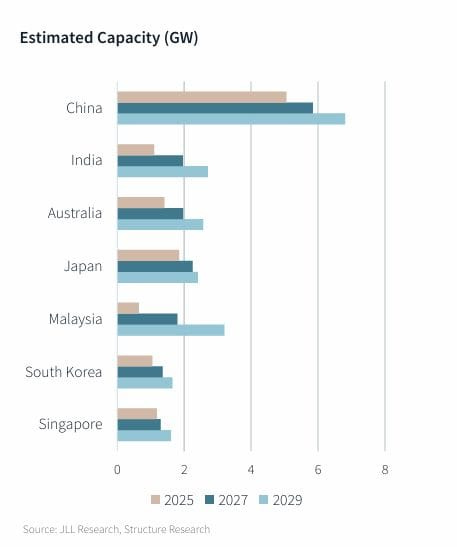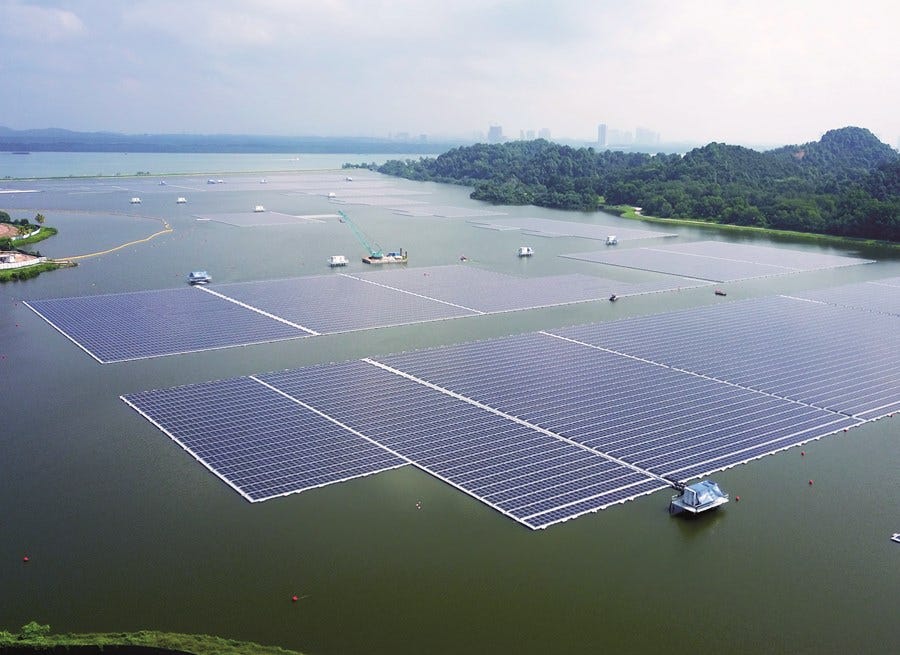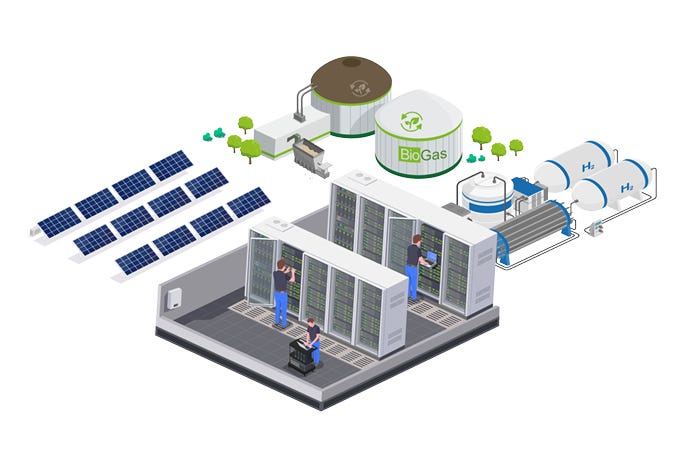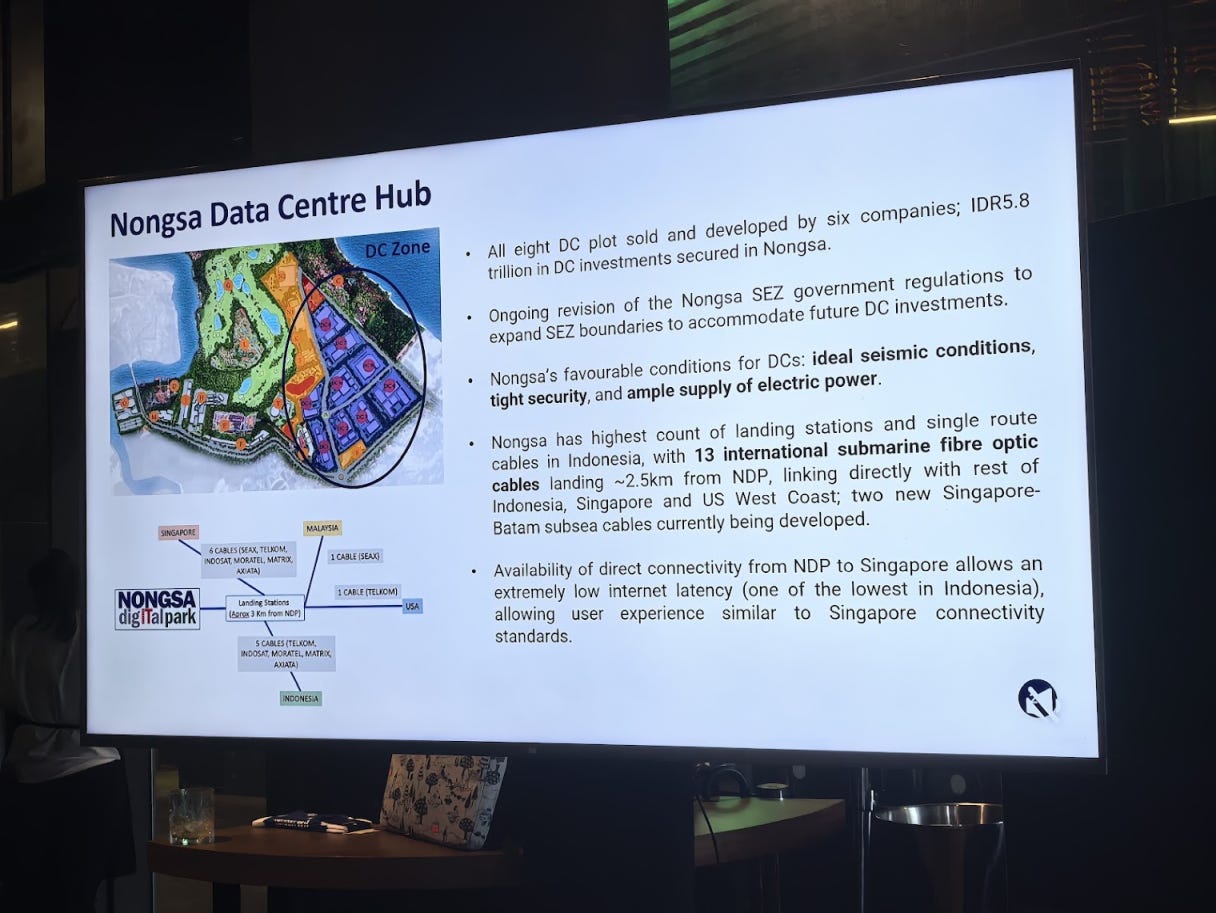Singapore's data centre restraint is actually a power play
The region’s data centre race is heating up, everywhere except Singapore. What’s going on?
Malaysia has been busy expanding its data centres. According to the latest report from JLL Research, Malaysia now leads in upcoming data centre capacity with 3,530MW planned by 2029. And lest you think it’s an unsustainable bubble, a separate Knight Frank report noted that Johor’s data centre market is almost fully taken up in the first half of 2025, with a vacancy rate of just 1.1 per cent.
Meanwhile, Singapore, Southeast Asia’s original data centre hub and current champ with 1,400MW of live data centre capacity - appears to be sitting on the sidelines. Beyond announcing 300MW of additional capacity in the Green Data Centre Roadmap last May, things have been quiet.
But Singapore isn’t playing the data centre capacity game. It’s playing a different game entirely - one that sits above the infrastructure itself.
Singapore’s long game: Building a green energy hub
Singapore is quietly recasting itself as a sustainability leader. This week brought news of a conditional approval to import 1GW of low-carbon electricity from Sarawak, Malaysia. Separately, an agreement was announced on Friday to study a second 2GW electricity interconnection with Johor by 2030.
This is just one piece of a much larger puzzle. For years now, Singapore has been building hydrogen-compatible power plants and keeping the nuclear option open. It’s exploring geothermal energy in the north, awarded grants to develop ammonia as marine fuel, and is actively studying carbon capture technologies with a pilot launching by 2026. In a nutshell, Singapore’s long game is to build itself into a regonal leader in green energy.
How does a resource-scarce island nation pull this off? Consider the precedent: Singapore became Asia’s undisputed oil hub - with massive refining, storage, and trading operations - despite having no indigenous oil reserves. Now, as the energy landscape shifts, Singapore is applying the same playbook to sustainability.
Here’s why Singapore has resisted jumping into the AI data centre race. It knows it can’t have its cake and eat it too. But cracking the puzzle of importing renewable energy at scale and competitive prices will open the floodgates to a new generation of green data centres. And when that happens, it already has a floating, sustainable data centre park ready to scale to 1GW.
Greener data centres today
While that vision unfolds, Singapore isn’t standing still. The masterplan to achieve sustainability leadership will take years, perhaps decades. In the meantime, Singapore is working to ensure its data centres meet every other green standard.
As outlined in the Green Data Centre Roadmap, Singapore is tackling energy efficiency at both facility and IT equipment levels. At the facility level, this means upgrading M&E equipment, adopting alternative cooling technologies including liquid cooling, and running data centres at higher temperatures.
The IT equipment challenge is arguably harder, as it requires reducing consumption at its source. This involves optimising equipment utilisation and adopting green software techniques such as application modernisation and computational offload.
Singapore is also steering data centres towards novel renewable fuels, which are alternative energy sources that are renewable. The upcoming DC-CFA2 application for new data centres is expected to specify much tougher requirements on this front. Winners will likely establish their facilities on Jurong Island, the future home of Singapore’s hydrogen hub.
Ultimately, this hard-won expertise could be exported as knowledge or low-carbon energy exports from Singapore’s green energy ports. The following paragraph I wrote for GovInsider last year reflects the Singapore government’s strategic thinking:
In his speech at the launch of Google’s fourth data centre in June, Senior Minister of State Dr Janil Puthucheary shed some light on the government’s strategy: “This challenge [of sustainability] is not unique to Singapore; eventually, all of us, wherever we are in the world, are going to be faced with these constraints. Because of who we are, we are determined to turn these constraints into [opportunities] to innovate and capture value from the growth of sustainable data centres.”
This strategy of turning constraints into exportable knowledge is precisely why Singapore views regional growth not as a zero-sum game, but as a mutual opportunity.
Win-win for Southeast Asia
Is the sharp rise of data centres in Johor bad for Singapore? Only if viewed as a zero-sum game. But what if the pie is large enough for everyone? What if we need so much data centre capacity that no single location can reasonably bear the burden of hosting the lion’s share of digital infrastructure?
At a pre-launch event by BW Digital last month, EDB’s Herman Loh spoke of SIJORI, a region including Singapore, Johor, and Batam in Indonesia, which he described as a 50-kilometre availability zone around Singapore. A data cluster around Singapore benefits everyone, he said: “The digital pie is growing quickly, there’s enough for everyone, and it’s not a zero-sum game.”
The race is now on to achieve energy efficiency in Singapore data centres over the next decade. As I wrote previously, this cannot happen through regulation alone but requires a skilful combination of policies, accreditation programmes, and incentive schemes spanning multiple government agencies.
The goal is to move beyond tired, limited approaches like recycled wastewater and rooftop solar panels. Instead, Singapore aims to create an ecosystem that drives efficiency across the entire digital stack, establishing a virtuous cycle of sustainability.
While it appears at first blush that Singapore has foregone the crown, the reality is it has embarked on an entirely different game. Singapore is building green energy infrastructure first, then unlocking sustainable data centre growth. And here’s the thing: in a world increasingly constrained by power and carbon, whoever owns the ecosystem - the green energy supply, the efficiency standards, the operational expertise - holds the real cards.
The spark for this came from the commentary I wrote for my free Tech Stories newsletter that went out earlier today. It includes a digest of other stories I wrote this week. To get it in your inbox, sign up here.







Hi Clearly TechWe love and appreciate your content. Let’s connect — really enjoyed your perspective on data center and other topics , it resonates with how we approach research. At Thesis Rationale, we use a thesis-driven framework that categorizes companies into compounders, structural blue chips, and growth leaders — a way to focus on durability over noise. Would love to exchange more thoughts.
https://open.substack.com/pub/thesisrationale/p/annual-investment-review-20242025?r=48cf8j&utm_campaign=post&utm_medium=web&showWelcomeOnShare=false